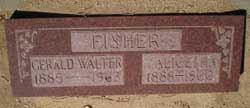Clark Gable was a true gentleman. And we have that on the very best authority: straight from Minden’s own early Justice of the Peace, Walt Fisher. One of Fisher’s very first acts as JP was to perform the 1955 marriage of the much-married Gable to actress Kay Williams.
The Douglas County Clerk pulled a bit of a fast one when Gable and Williams showed up to apply for a marriage license. It was after hours, so she dialed up Judge Fisher and asked if a couple could come to his home to be married. “Fine,” he said. “Send them over.” The clerk didn’t bother to mention who she was sending. So imagine Fisher’s surprise when he opened the door!
The couple had brought their own witnesses with them, so there was no need to call Fisher’s wife from the other room. Gable was quiet — a true gentleman, Judge Fisher later recalled. The service was quickly over, and Gable tucked $500 in the judge’s hand as the newlyweds departed. The judge’s wife didn’t learn who had been in her house until several minutes after they’d left (an omission for which the judge, it was said, later paid dearly!)
It was Gable’s fifth marriage, and Kay’s third. Perhaps it was Judge Fisher’s special touch; this marriage stuck, lasting until Gable died in 1960.

And as for Judge Fisher’s own story, that’s a fun tale in itself!
Walt Fisher was born in 1885, on a Colorado ranch adjoining the famous Calgary Ranch. Walt’s father was killed in a tragic ranching accident when Walt was just a boy, leaving his mother a widow — and a pregnant one at that. Next-door rancher Calgary had recently lost his own wife in childbirth, so the solution was obvious: Calgary and Mrs. Fisher were soon married, combining households, ranches and children.
This new arrangement was tough on Walt, however; his step-father, he felt, was “too much of a disciplinarian.” So at 16 Walt struck out on his own, working his way west as a hired hand on cattle and sheep drives. Walt and a brother eventually arrived in Virginia City about 1906. There they opened a bakery together — an occupation that Walt continued to love all his life. His grandchildren still remember his homemade sourdough bread, biscuits and pancakes.

Mining in Virginia City hit a downturn, and Walt moved to Carson City. There he found employment as a freight engineer for the V&T Railroad at the Carson Station, beginning in 1910. And there he also found — love.
In Carson, Walt met pretty Alice Taylor, a young seamstress. Alice had come west by wagon from Illinois with her widowed mother and three sisters as a teenager, and together they had opened a tailoring shop in Carson City about 1910.

Alice and Walt met when he came into her shop — and were married in 1913.
Walt continued to work for the V&T and in 1924, secured a position as the new Minden stationmaster. The small wooden terminal at Minden included a branch post office, a pot-bellied stove, and a large pickle jar. Local ranchers would come in to get their mail, hang around the woodstove, and (of course) talk. Walt soon knew everyone in town.
But around 1950, word came that the Minden station was going to be shut down. Walt had worked for the V&T for a total of over 40 years, and was ready for something new.

Walt had once rescued a young Basque being beaten by local thugs, earning him the respect of the local Basque community. Hearing that Walt was about to retire, the Basques approached Walt to offer support if he would run for local Justice of the Peace. And the rest, as they say, is history. Walt ran successfully for the office in 1954, and eventually served four consecutive terms in office as East Fork Justice of the Peace.
Walt and Alice lived on Mono Avenue, across from the old brick Elementary School in Minden. It’s the modest home where Gable and Williams arrived in 1955 to be married. It’s also where one very drunk woman driver was hauled by arresting officers at 4:30 in the morning, after backing her vehicle from a bar into a parked car. Given the wee hour, Judge Fisher answered the door clad in a black bathrobe.

There stood the arresting officers with the inebriated woman — so inebriated she mistook Fisher in his black bathrobe for a Catholic priest. Once assured that the judge was not a priest, she berated him for impersonating a priest. The woman proved too tipsy to face the legal music even hours later, when court began. As the Record-Courier reported, the ever-patient Judge Fisher simply ordered “another 24 hours free lodging in the calaboose.” And with that plus a $100 fine, justice was served.
Walt’s wife, Alice, passed away in December, 1960, after a lengthy illness. Walt continued to serve on the bench until poor health finally forced his retirement in 1961. He passed away in 1963.

Walt and Alice are buried at Lone Mountain Cemetery in Carson City, their simple joint stone a sweet reminder of their fascinating lives.
Many thanks to Walt Fisher’s granddaughter Teri Balfour for photos and family history for this story!
____________
Enjoyed this story? Check out our great history books at https://clairitagecom.wpengine.com!
